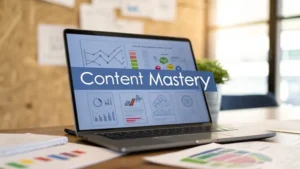8 Minimalist Home Office Ideas for Maximum Productivity
Is your home office more distracting than empowering? A cluttered desk, scattered papers, and messy cables can crush creativity rather Read More
Bullet Journal Planner: Top Tips & Creative Strategies
The bullet journal planner isn't just a stylish notebook; it's a highly personalized productivity powerhouse. Developed by Ryder Carroll, this method cleverly Read More
Starting a Blog in 2025: Your Roadmap to Digital Success
You might be thinking: with so much content already online, does starting a blog in 2025 even make sense? It's Read More
How to Batch Create Content: Boost Your Productivity
Batch content creation is more than just a helpful tip for boosting productivity; it’s a whole new way of thinking Read More
The Complete Guide to Bullet Journal Page by Page: A Practical Journey
The bullet journal (or BuJo) started as a straightforward way to organize daily life. Unlike standard planners with their rigid formats, this Read More
Website Content Strategy Template for High-Impact Results
Let's be honest, most website content strategies don't live up to the hype. They often end up a disorganized mix Read More
Mastering the Pomodoro Technique for ADHD: A Complete Guide
If you've got ADHD, traditional productivity approaches probably haven't worked well for you. Trying to "power through" tasks often leads Read More
Bullet Journal Weekly Spread: Inspiring Ideas
A well-organized week is essential for a productive life, especially for busy entrepreneurs, solopreneurs, content creators, and anyone juggling multiple Read More
Personal Knowledge Management System: Top Tips
We live in a world overflowing with information. Every day, we're bombarded with data, from news and social media to Read More














